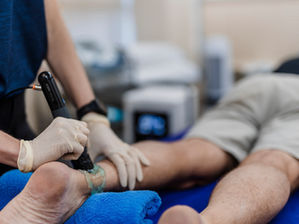Planting the Future in Lake Macquarie: Tiny Forest, Big Message
- intouch Magazine
- Apr 7
- 2 min read

As bulldozers roll into once-forested pockets of Lake Macquarie, the urgency for a different kind of progress is growing. This Saturday in Eraring, community members will gather not to clear land—but to heal it. They’ll plant 1,500 native trees and shrubs in just 2.5 hours, creating what will become the city’s biggest Tiny Forest to date.
The event is being hosted by The Groundswell Collective, freshly recognised by Lake Macquarie City Council as the 2025 Local Environmental Leader. And their message is clear: if destruction can happen fast, so can regeneration.
This forest will be the 11th project for the group, who have now planted almost 9,000 native plants across the region, engaging over 1,500 students and community members in the process. Their model combines climate action with education, biodiversity restoration, and deep community connection. And with each planting, their work becomes not just a symbol of resistance to environmental loss—but a real, tangible antidote to it.
The timing couldn’t be more poignant. Just this week, the Lake Macquarie Housing Forum sent a strong message: the city needs more housing—and fast. Lake Mac’s population is projected to grow by 40,000 people in the next 20 years, requiring close to 19,000 new dwellings. That’s the equivalent of almost 200 Myall Road-sized developments, many of them planned for the already heat-stressed western side of the lake.
But while the Forum focused on speed and supply, it made no mention of the environmental impact of this growth—a silence that’s deeply unsettling to many residents. Recent land clearing at Myall Road, where centuries-old trees were felled in seconds despite widespread community objection, has left scars on both the land and local trust.
“It’s hard not to feel overwhelmed,” says Anna Noon, Director of The Groundswell Collective. “But this is where active hope comes in. We can grieve, and still plant. We can be angry, and still take action. Tiny Forests give people a real way to do something—to cool our suburbs, restore habitat, and reconnect with each other.”
Western Lake Macquarie already experiences four times as many extreme heat days as the east. As housing demand increases, so does the need for green infrastructure and thoughtful, community-led solutions. The Tiny Forest model—based on the Miyawaki method—creates ultra-dense, fast-growing native forests that reach full canopy in 20 years rather than 200. These mini ecosystems cool the land, soak up carbon, and provide essential habitat for native species—all in the space of a tennis court.
But most of all, they restore something harder to quantify: a sense of agency.
“People come to these events feeling anxious and leave feeling empowered,” Noon says. “It’s about giving people something to say yes to—a future they’ve helped shape with their own hands.”


























































